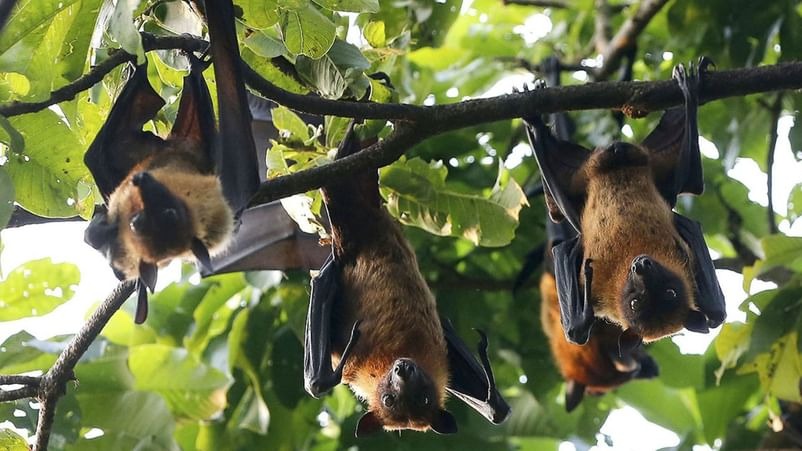
New Delhi: A new potential virus outbreak in China has scientists and health experts on alert. The HKU5-CoV-2, a newly discovered coronavirus, belongs to the same ‘merbecovirus’ subgenus responsible for Middle East Respiratory Syndrome (MERS), a highly fatal respiratory illness.
What makes this discovery alarming is that scientists in China have confirmed that the virus can bind to human ACE2 receptors—a characteristic it shares with SARS-CoV-2 (the COVID-19 virus) and NL63 (a common cold virus). This raises concerns about its potential to infect humans.
How Was the HKU5-CoV-2 Virus Discovered?
Virologists in China accidentally detected HKU5-CoV-2 while studying the SARS-CoV-2 subgenus. Laboratory tests revealed that the virus had evolved to infect human cells, a major red flag for public health experts.
Key Findings from Lab Tests:
The virus was tested on mini-human organ models, and the results were concerning.
It showed the ability to infect human respiratory organs.
Scientists noted a structural adaptation that makes it more compatible with human ACE2 receptors than its earlier forms.
This discovery immediately drew attention, especially considering the origins of the COVID-19 pandemic.
Why Are Scientists Concerned About HKU5-CoV-2?
There are similarities between the discovery of HKU5-CoV-2 and SARS-CoV-2, the virus responsible for the COVID-19 pandemic:
It was identified by Shi Zhengli’s team—the same scientist, also known as “Batwoman,” who has extensively studied bat coronaviruses at the Wuhan Institute of Virology.
The discovery of yet another dangerous virus in Wuhan has led to renewed concerns over potential lab leaks.
Like COVID-19, this virus originates from bats but has shown the ability to jump to humans, either directly or via an intermediate host.
While scientists are not jumping to conclusions yet, the fact that this virus can infect human cell cultures is a serious cause for concern.
What is HKU5-CoV-2 and How Does It Compare to COVID-19?
HKU5-CoV-2 is a coronavirus belonging to the same family as SARS-CoV-2 but has more in common with MERS, which had a higher fatality rate than COVID-19.
Key Similarities with COVID-19:
It binds to human ACE2 receptors, just like COVID-19.
It has similar spike protein structures, which help it attach to human cells.
It belongs to the coronavirus family, known for zoonotic transmission (jumping from animals to humans).
Key Differences:
HKU5-CoV-2 has not yet spread to humans, whereas COVID-19 was already spreading by the time it was identified.
Unlike COVID-19, it is still under lab testing, and no human infections have been confirmed.
Scientists believe it has a stronger adaptation for human ACE2 receptors than its previous variants.
The biggest concern is whether this virus can mutate further and trigger an outbreak.
What Could HKU5-CoV-2 Lead To?
Scientists are still studying how dangerous this virus could be, but early signs suggest it may cause:
Mild Symptoms – Similar to common cold or COVID-19, including fever, sneezing, sore throat.
Respiratory Issues – In severe cases, it could attack the lungs, leading to breathing difficulties and fatigue.
Zoonotic Transmission – Like MERS and COVID-19, it could spread from animals to humans, raising concerns of a new outbreak.
According to Dr. Shishir Jha, a general physician from Noida:
"The subgenus has previously caused MERS, which affects the upper respiratory tract. The symptoms could be similar to common cold or COVID, with fever, sneezing, and sore throat being early signs. In advanced stages, it can cause shortness of breath and severe fatigue."
Should We Be Worried About Another Pandemic?
For now, experts say there is no immediate reason to panic.
Dr. Jha believes that our immunity and vaccination coverage reduce the risk of another pandemic.
He points out that 80% of the global population has developed some immunity against similar SARS viruses.
However, he urges global health authorities to monitor this new virus closely to prevent any surprises.
Key Takeaways:
HKU5-CoV-2 has not yet spread to humans, but lab tests suggest it has the potential.
Scientists are studying the virus's ability to mutate and infect people.
Vaccination and prior exposure to coronaviruses could help limit its impact.
The global scientific community must remain on high alert to prevent another pandemic-like situation.
Final Thoughts: What Should We Do?
While HKU5-CoV-2 has raised concerns, it’s important to stay informed rather than panic.
Governments and health agencies need to monitor the situation closely.
More research is needed to confirm whether this virus poses a real threat to humans.
Global pandemic preparedness should remain a priority, given how unpredictable zoonotic viruses can be.

 Desk
Desk Share
Share






